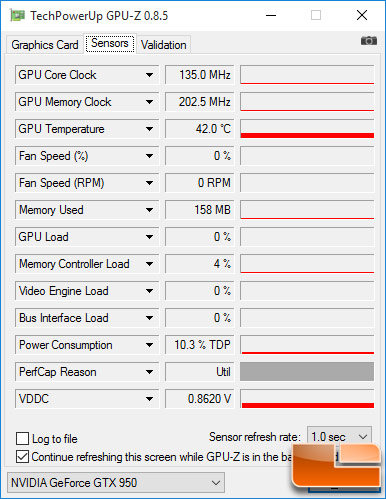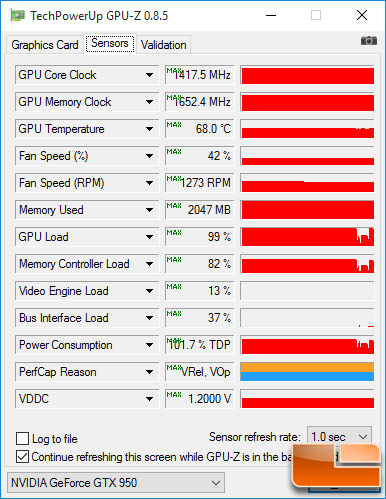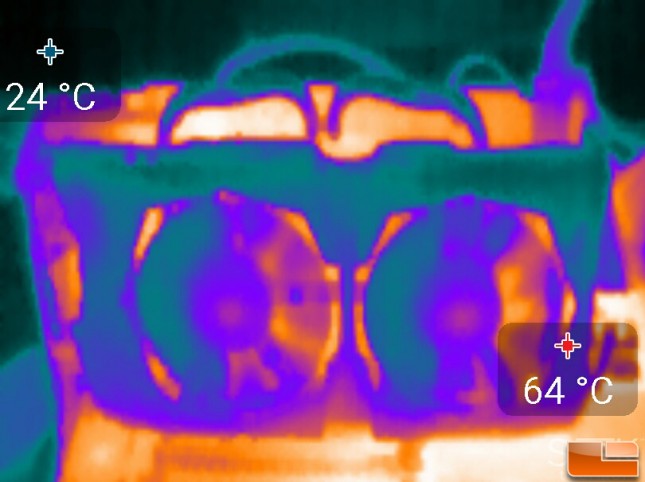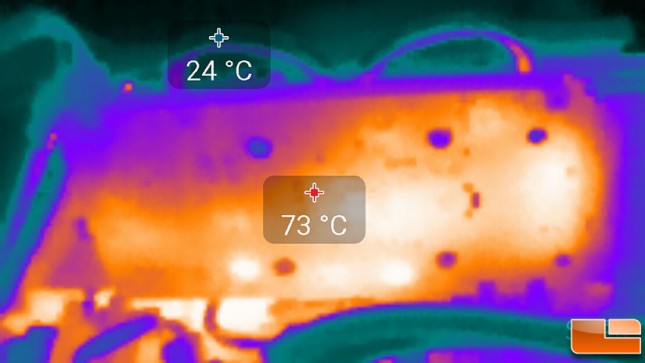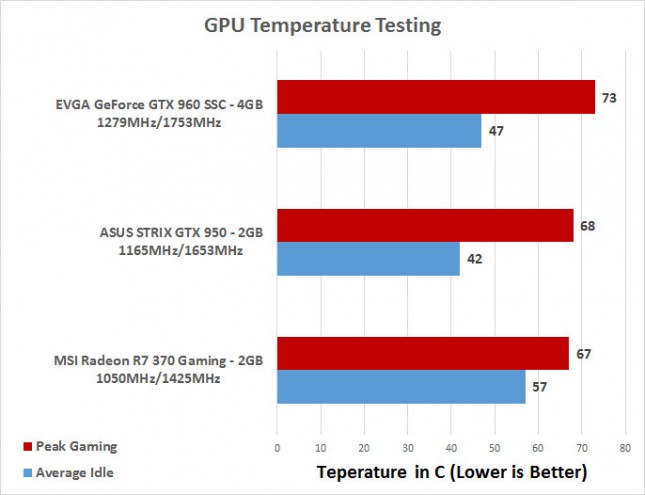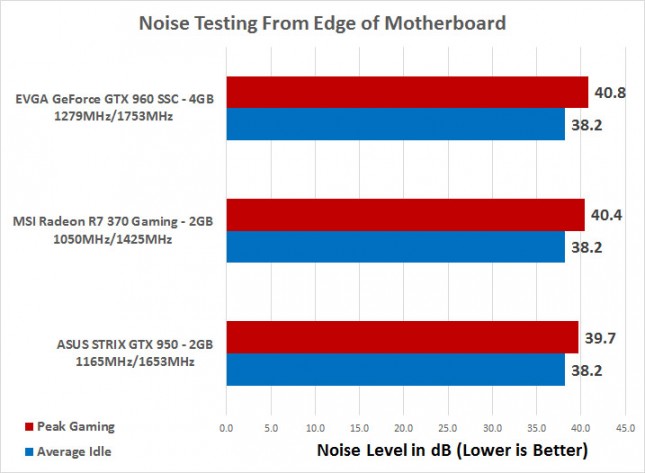NVIDIA GeForce GTX 950 2GB Video Card Review – ASUS STRIX GTX 950
Temperature & Noise Testing
Temperatures are important to enthusiasts and gamers, so we took a bit of time and did some temperature testing on the the ASUS version of the NVIDIA GeForce GTX 950 video card.
ASUS Strix GTX 950 Direct CU II OC 2GB Idle Temps:
The ASUS Strix GTX 950 STRIX OC DirectCU II video card has no fans spinning at idle, so the card is dead silent. Even with no fans spinning at all we found a rather impressive idle temperature of just 42C.
When gaming we hit 68C in a room where the temperature was 67F (20.5C), so we have no complaints at all. Not the fan speed got up to 1273 RPM. As you can see when we were gaming the GM206 Maxwell GPU was running at 1417.5 MHz and we used all of the 2GB frame buffer on our 1080p benchmarks!
We took some thermal images of the ASUS GeForce GTX 950 STRIX card during a single pass of 3DMark Fire Strike and found that the back of the card got up to 73C while the front of the card topped out at 64C thanks to the fan blowing across the cooling fins.
Sound Testing
We test noise levels with an Extech sound level meter that has 1.5dB accuracy that meets Type 2 standards. This meter ranges from 35dB to 90dB on the low measurement range, which is perfect for us as our test room usually averages around 36dB. We measure the sound level two inches above the corner of the motherboard with ‘A’ frequency weighting. The microphone wind cover is used to make sure no wind is blowing across the microphone, which would seriously throw off the data.
All of the cards have no fans spinning at idle, so the idle noise is the same on all of the cards. The only reason the system is above ambient noise levels is due to CPU’s water cooler fans and pump noise. Even with the fans running the ASUS STRIX GTX 950 hit just 39.7dB, so this is a very quiet card and that will appeal to many gamers. We didn’t notice any choke noise when gaming when we tried the card in a PC case. The noise between the three cards we tested was pretty much the same at both idle and load since none of the fans spun at idle and all GPU coolers were dual fan models with low RPM fan speeds.

